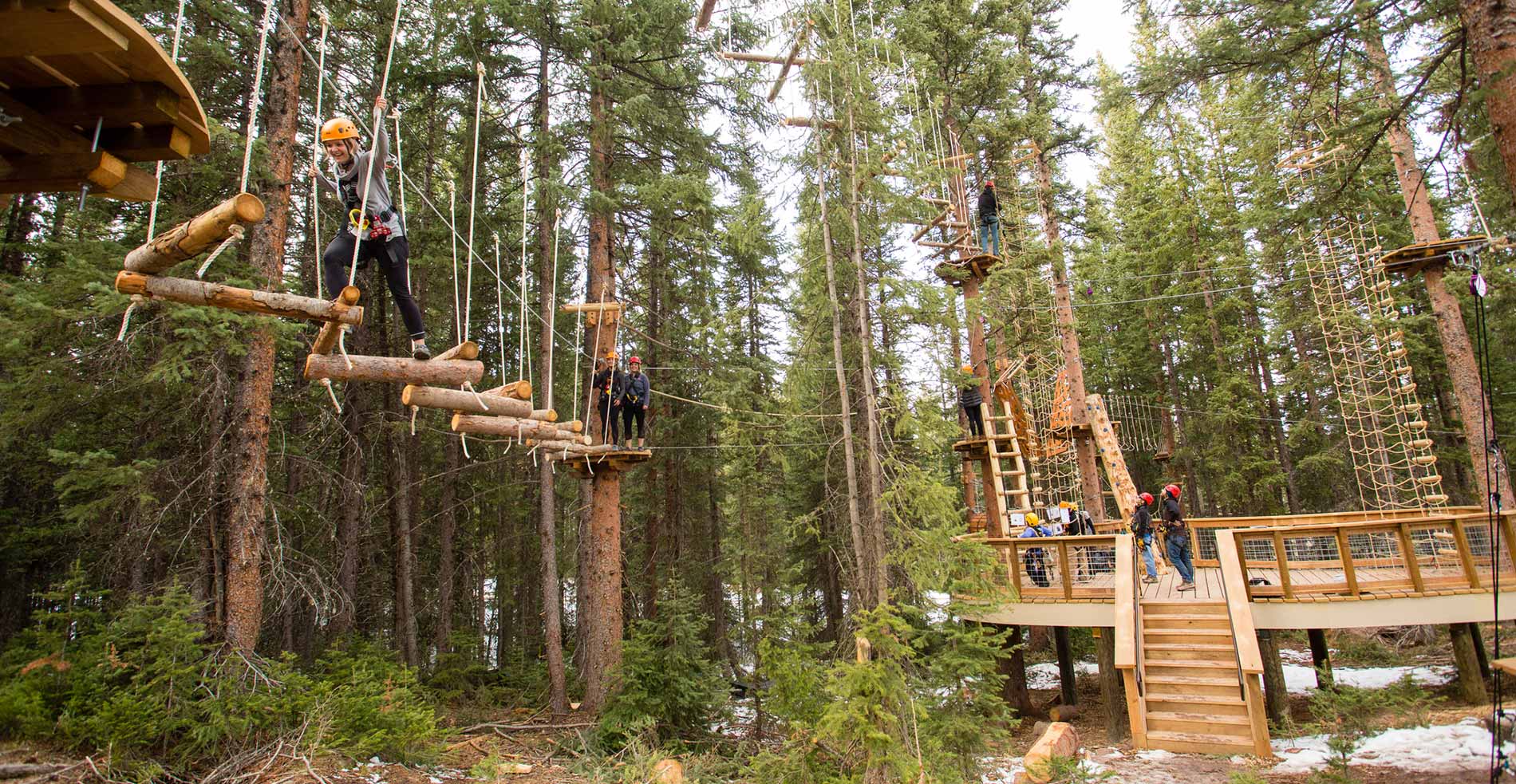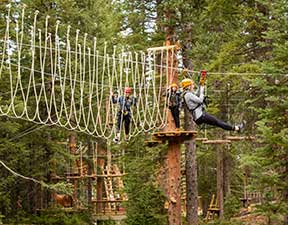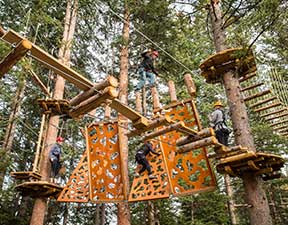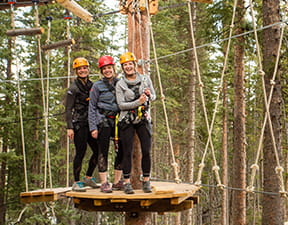How The Lost Forest Was Built Sustainably

Much anticipation surrounds the opening of the new Lost Forest in Aspen Snowmass on June 22. An alpine coaster, canopy run zip lines, biking trails, ropes challenges, and climbing walls are tucked in among the trees and rocks on Snowmass Mountain. Not to mention, there are ponds for fishing, creeks to hike along, two disc golf courses, as well as places for quiet contemplation and places to gather.
Aspen Snowmass has created a new way to experience the mountain environment, while being mindful of minimizing the impact on it. While focusing on making an exhilarating in-the-forest guest experience, Aspen Snowmass incorporated sustainable practices in constructing the Lost Forest.
According to Peter Santini, Aspen Skiing Company’s director of business development, the U.S. Forest Service was very involved in overseeing the design and construction. “We went through a very rigorous, intensive review of the impact of the Lost Forest,” Santini said. “The Forest Service also fully approved the execution and maintenance of our plan.”
According to Peter Santini, Aspen Skiing Company’s director of business development, the U.S. Forest Service was very involved in overseeing the design and construction. “We went through a very rigorous, intensive review of the impact of the Lost Forest,” Santini said. “The Forest Service also fully approved the execution and maintenance of our plan.”

Lost Forest, Snowmass, Colorado summer activity
Santini outlined some of the sustainable methods used in creating the Lost Forest. For instance, the high ropes challenge course is constructed of reclaimed wood. Wood from trees that were removed was repurposed to build the structure. Kentucky bluegrass was replaced with a fescue hybrid mix—a type of grass that uses less water. In addition, backfill was used throughout the project.
“We saved approximately 300 truck trips by using backfill,” Santini explained.
The area around Elk Camp where the Lost Forest is located is closed for wildlife activity until June 22 when the Elk Camp Gondola and Elk Camp chairlift will start running daily through Sept. 3 and then weekends through Sept. 30.
A focus on sustainability is nothing new at Snowmass. In addition to the Lost Forest, the nearby Elk Camp Restaurant is LEED Silver-certified—a rigorous national classification for green buildings. One of the building's most innovative features is the use of untreated, raw water for flush toilets, from a reservoir above the restaurant. This eliminates energy use from pumping the water. Furthermore, a small hydroelectric plant lower on the slopes of Snowmass generates 150,000 kWh annually, preventing the emission of 175,000 pounds of carbon dioxide.
For Aspen Snowmass, all of these efforts are about more than just feeling good—they are good business.
“We saved approximately 300 truck trips by using backfill,” Santini explained.
The area around Elk Camp where the Lost Forest is located is closed for wildlife activity until June 22 when the Elk Camp Gondola and Elk Camp chairlift will start running daily through Sept. 3 and then weekends through Sept. 30.
A focus on sustainability is nothing new at Snowmass. In addition to the Lost Forest, the nearby Elk Camp Restaurant is LEED Silver-certified—a rigorous national classification for green buildings. One of the building's most innovative features is the use of untreated, raw water for flush toilets, from a reservoir above the restaurant. This eliminates energy use from pumping the water. Furthermore, a small hydroelectric plant lower on the slopes of Snowmass generates 150,000 kWh annually, preventing the emission of 175,000 pounds of carbon dioxide.
For Aspen Snowmass, all of these efforts are about more than just feeling good—they are good business.
Tickets Are Available Now!
Published June 2018
About The Author




